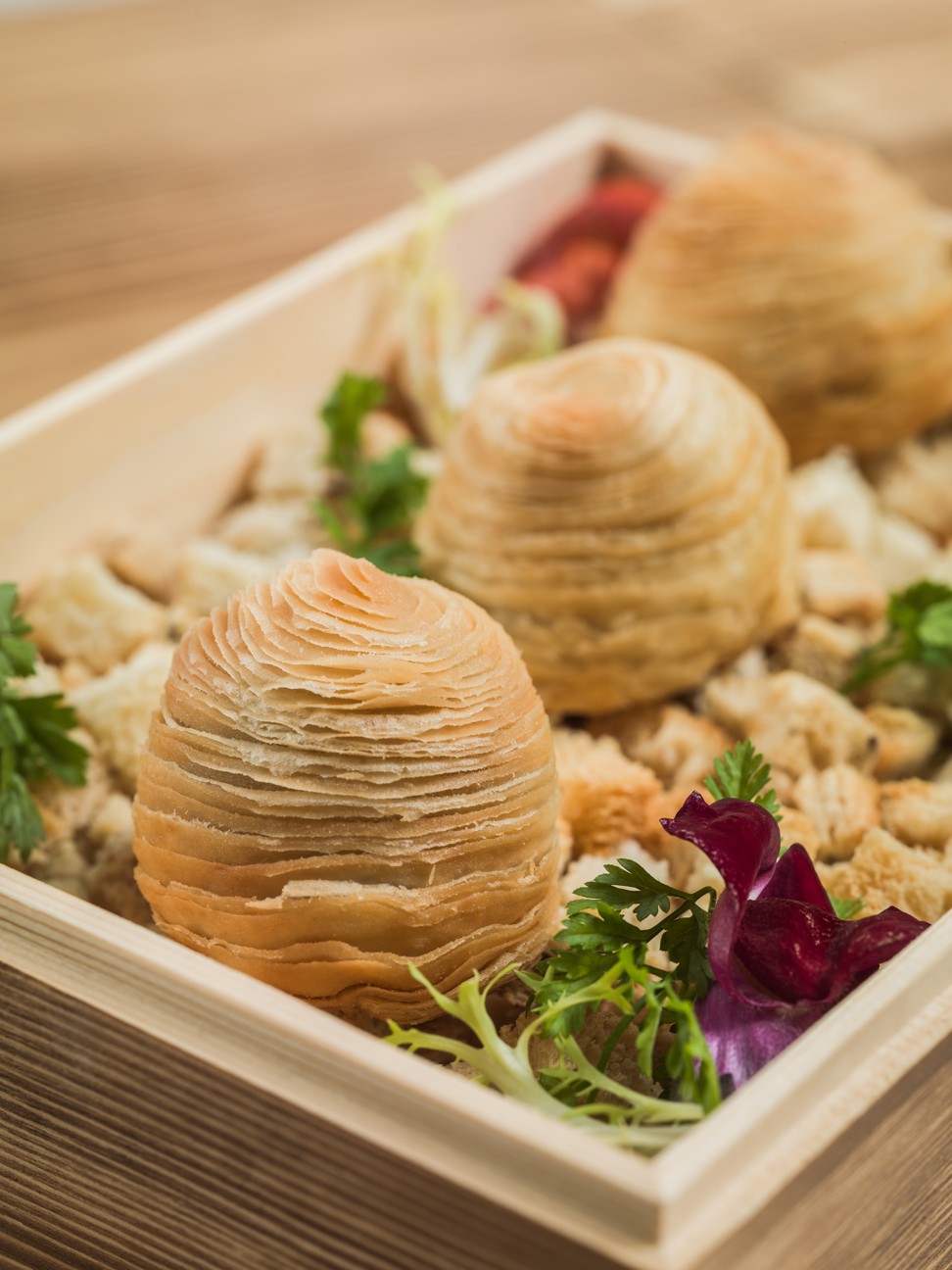Fancy a creative twist on dim sum? Chefs at Sands Resorts Macao have the answer

Who doesn’t love dim sum? The bite-sized delicacies are undoubtedly one of the most popular culinary choices in Chinese cuisine. Having originated in Guangdong province, dim sum has come a long way from being a snack served with tea, thanks to the creativity and ingenuity of chefs from yesteryear to the present day.
Chinese restaurants at Sands Resorts Macao have crafted some new, innovative dim sum dishes that appeal to the eyes and to the palate.
Overlooking the Cotai Strip, La Chine – nestled in The Parisian Macao’s Eiffel Tower – serves French-influenced Chinese dishes and a collection of innovative dim sum.
With over 30 years of experience in the culinary world, executive chef at La Chine, Chung Kuy Fai, says, “Our dim sum is a fusion of traditional Cantonese dim sum, Chinese regional cuisine such as Hangzhou and Shanxi, as well as foreign cuisine – from Malaysian, to French, to Australian and Japanese. We have a lot of ideas and we also look for the best ingredients all over the world to prepare our dim sum.”
One of the restaurant’s signature dim sums, Eiffel Tower shrimp dumplings in golden broth, is a modern and creative twist on har gau (steamed shrimp dumplings). Shaped as golden fish, the dumplings are served in the golden broth, which is cooked for over 10 hours with ingredients such as duck, conpoy, pork knuckles and chicken. Fai says the savoury broth matches the flavour of the dumplings, and helps keep the skin of the dumplings moist.

Fai has also created another groundbreaking version of har gau – deep-fried crystal blue shrimp dumplings with truffle caviar. With crystal blue shrimps as the filling, the dumplings are topped with a small piece of okra and truffle caviar before being served. “Har gau is traditionally prepared by steaming,” Fai says. “But our version of har gau is deep-fried and we also add roselle juice to make the wrapper pink in colour.”
Hailing from Malaysia, Fai honed his culinary skills in mainland China, New York, San Francisco and Tokyo. He brought the culinary expertise he gained working in these cities to his dim sum menu. Japanese braised turnip puffs are inspired by Japanese oden, and the turnip stuffing is prepared using oden cooking methods and recipes; steamed curry crabmeat xiao long bao includes spices used in Malaysian dishes; the dong bo braised pork belly – a Hangzhou delicacy – with glutinous rice and steamed scallop is a version of siu mai, using the provincial delicacy as the wrapper.

“I spent many years in Hangzhou. Their version of siu mai is made with glutinous rice, and dong bo braised pork belly is the famous local delicacy,” says Fai. “The pork belly is first braised, then sliced into thins when it’s cooled.”
His experience in northern China gave him the idea to create another signature dim sum – steamed stuffed sea cucumber dumplings with Beijing shallot and conpoy sauce. “In northern China, sea cucumber is a popular food. Since the flavour of sea cucumber is not strong, the sauce is essential in this dim sum,” he says. “We integrate some good ingredients from the north into our dish from the south.”

At Lotus Palace, another Chinese restaurant at The Parisian Macao, executive sous chef Hew Choong Yew incorporates upscale ingredients into classic dim sum dishes. Creative combinations include steamed scallop dumplings topped with trio crab roe, steamed black truffle dumplings with yam bean, and the carrot-shaped crispy glutinous rice dumplings with goose liver and dried scallop.

“We experimented extensively with a wide range of materials in order to create what looks like traditional dim sum, but will surprise and delight when tasted,” says Hew.
Over at the Conrad Macao, Sands Cotai Central, Dynasty 8 has released creative new dim sum dishes using healthy ingredients. Executive chef Yap Poh Weng says, “I hope customers enjoy some dim sum that they can’t find outside. It’s more creative, while being healthy is also a focus.”

New dim sum additions such as steamed vegetable dumpling with black truffle are light as well as fragrant; steamed siu mai pork dumpling with crabmeat is savoury; deep-fried sesame and purple sweet potato stuffed with taro is a dish abundant in good carbohydrates.
Many people enjoy eating dim sum with sauces, from chilli sauce, to X.O. sauce and vinegar. Yap has created some special sauces to go with his dim sum. The steamed squid ink rice roll filled with Australian scallop and shrimp is served with a house-made sauce, and is crispy and with a strong umami flavour.
“People usually use average soy sauce for rice rolls or cheung fan. The sauce served with our version is especially prepared with soy sauce made for steamed fish and combined with Japanese bonita flakes. It has less in sodium and matches well with rice rolls wrapped with seafood,” explains Yap.
He also prepared a special dipping sauce for the crispy spring roll stick filled with shrimp and banana. “We usually dip [in] Worcestershire sauce when eating spring rolls. We made a special dipping sauce with mayonnaise and rose sugar. I think the floral scent of rose matches well with the fruit,” Yap says.
Want more stories like this? Sign up here. Follow STYLE on Facebook, Instagram and Twitter

Top chefs at three restaurants at Sands Resorts Macao – La Chine, Lotus Palace and Dynasty 8 – have reinvented the delectable bites for a new generation of diners